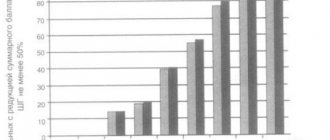Cipralex
Use during pregnancy and breastfeeding
Contraindicated for use during pregnancy and lactation (breastfeeding).
Use for liver dysfunction
Should be used with caution in case of liver cirrhosis.
Use for renal impairment
It should be used with caution in patients with renal failure (creatinine clearance less than 30 ml/min).
Use in children
Contraindicated in children and adolescents under 15 years of age.
Use in elderly patients
Should be used with caution in elderly patients.
special instructions
Use with caution in patients with renal failure (creatinine clearance less than 30 ml/min), hypomania, mania, pharmacologically uncontrolled epilepsy, depression with suicidal attempts, diabetes mellitus, elderly patients, cirrhosis of the liver, a tendency to bleeding, simultaneously with taking medications that reduce the threshold of convulsive readiness, causing hyponatremia, with ethanol, with drugs metabolized with the participation of isoenzymes of the CYP2C19 system.
Escitalopram should be prescribed only after 2 weeks. after discontinuation of irreversible MAO inhibitors and 24 hours after discontinuation of therapy with a reversible MAO inhibitor. Non-selective MAO inhibitors can be prescribed no earlier than 7 days after discontinuation of escitalopram.
Some patients with panic disorder may experience increased anxiety at the beginning of treatment with escitalopram, which usually disappears over the next 2 weeks. treatment. To reduce the likelihood of anxiety, low initial doses are recommended.
Escitalopram should be discontinued if epileptic seizures develop or become more frequent in pharmacologically uncontrolled epilepsy.
If a manic state develops, escitalopram should be discontinued.
Escitalopram can increase the concentration of glucose in the blood in diabetes mellitus, which may require dose adjustment of hypoglycemic drugs.
Clinical experience with escitalopram indicates a possible increase in the risk of suicide attempts in the first weeks of therapy, and therefore it is very important to carefully monitor patients during this period.
Hyponatremia associated with decreased ADH secretion occurs rarely with escitalopram and usually disappears when it is discontinued.
If serotonin syndrome develops, escitalopram should be immediately discontinued and symptomatic treatment prescribed.
Impact on the ability to drive vehicles and operate machinery
During the treatment period, patients should avoid driving vehicles and other activities that require high concentration and speed of psychomotor reactions.
Compound
The composition of the drug is given equivalent to the three main forms of release (see the next paragraph) based on the mass calculation per one tablet of the active substance escitalopram oxalate - 6.39/12.77/25.54 mg:
- fine crystalline cellulose (MCC) – 72.49/97.49/195 mg;
- ordinary talc 5.04/7/14 mg;
- croscarmellose sodium – 3.24/4.5/9 mg;
- Magnesium stearate – 0.9/1.25/2.5 mg.
The film coating of the tablets is an important component of the drug Cipralex. It consists of:
- hypromellose 5cP – 1.58/2.19/3.51 mg;
- titanium dioxide (E171) – 0.526/0.73/1.17 mg;
- macrogol 400 – 0.146/0.2/0.325 mg.
Release form
The drug is available in the form of round or oval biconvex white film-coated tablets with different dosages:
- 5 mg of active substance (marked “EK”) – 14 tablets in a blister pack (usually made of aluminum foil or PVC), 2 packs in a cardboard box.
- Cipralex 10 mg (symmetrical o and “L” relative marks on one of the surfaces) – 14 tablets in a blister, 1, 2 or 4 contours in a box.
- 20 mg of biologically active component (marked “E” and “N” on both sides of the line on one side of the tablet) - in a box there are 2 blisters with 14 filled cells.
Reviews of Cipralex
Those who took Cipralex are overwhelmingly satisfied with the effects of conservative treatment. The drug really helps to cope with phobias of various origins, allowing you to live a fuller life, not limited by fears, anxieties or worries about trivial reasons. However, recipients' feedback is often clouded by personal experiences of adverse reactions. Especially often there is a broken state , insomnia , and constant painful agitation .
Also, reviews of Cipralex on the forums say that in the vast majority of cases, libido and/or potency ( erectile dysfunction , dystonia of the muscles responsible for reproductive functions, changes in the perception of sexual intercourse, and so on). Both men and women complain about this side effect in equal numbers. What is interesting is that reviews of those taking antidepressants are also full of gratitude to the drugs for reducing desire, since satisfying animal instincts did not bring joy or long-awaited relief during depression.
Reviews from doctors about Cipralex primarily clinically and statistically confirm the effectiveness of the drug in the conservative treatment of neurological disorders . An antidepressant of such strength copes with depression and psychosis where more gentle methods do not bring any results. Side effects are perceived by specialists as necessary losses, because undesirable manifestations will disappear after a full course of sanitation.
Pharmacodynamics and pharmacokinetics
The absorption of the active ingredients does not depend on food intake, since the drug is an extremely strong pharmaceutical drug. Absolute bioavailability is about 80 percent, and the average half-life is 4 hours (however, this parameter may vary depending on the individual parameters of the body and environmental conditions).
Cipralex is metabolized in the liver . The constituent elements of the drug, even after oxidation, remain biologically active and, undergoing some changes in metabolic processes, are released in the form of glucuronides . Next, the metabolites are sent to the kidneys, which excrete waste drug residues through urine. Clearance after oral administration of the drug is 0.6 l/min.
The kinetics of escitalopram oxalate is described linearly. Equilibrium concentration in the systemic circulation, with a daily dose of 10 mg (the optimal amount of the active ingredient for an adult), is achieved after just one week of a conservative course of treatment with Cipralex.
In elderly patients (over 65 years of age), the pharmacological drug is eliminated somewhat more slowly. Clinical trials have shown that during a therapeutic dose, after a single dose of Cipralex, the amount of the active component in the systemic bloodstream of elderly people is 50 percent greater than in young volunteers.
Pharmacological action
Cipralex belongs to the pharmacological group of potent antidepressants . serotonin transporter enzyme , the drug inhibits the reuptake of the neurotransmitter in synaptic structures (the drug has a greater effect on the metabolic pathways of serotonin than on any other messengers). Accordingly, the physiological transmitter of the impulse is located in the synaptic cleft of the neuronal contact for a longer period of time, which causes an enhanced, prolonged effect on the postsynaptic membrane .
It should be noted that the drug is strong and long-acting, as it binds in two places to the serotonin transport enzyme. First of all, the main active component has high affinity for the primary amino acid sequence of the transporter protein. Also, the components of Cipralex bind to the allosteric center of this molecule, which secondarily enhances the effect of the drug, that is, leads to a more complete inhibition of neurotransmitter reuptake.
Cipralex exhibits weak activity to receptors as:
- serotonin 5-HT1A and 5-HT2;
- dopamine D1 and D2;
- alpha and beta adrenergic synapses;
- histamine H1 receptor cells;
- opioids and benzodiazepines;
- m-cholinergic receptors.
Cipralex's analogs
Level 4 ATC code matches:
Actaparoxetine
Plizil
Fluxen
Paroxin
Surlift
Asentra
Elycea
Fluoxetine
Lenuksin
Escitalopram
Adepress
Selectra
Stimuloton
Citalopram
Cipramil
Zoloft
Paroxetine
Prozac
Paxil
Rexetine
Currently, the following analogues of Cipralex can be found on pharmacy shelves: Escitolopram-Teva, Selectra, Elitseya, Miracitol .
Indications for use
It is recommended to include Cipralex in a conservative treatment regimen if neurological pathologies such as:
- prolonged periods of depression of any severity;
- panic disorders (which may be explained by agoraphobia - fear of open spaces);
- depressive stage of manic-depressive psychosis ;
- various types of social phobias or simply anxiety among people;
- obsessive-compulsive disorder (the medical explanation for “obsession”);
- neurosis ;
- generalized anxiety syndrome.
Overdose
In clinical practice, cases of overdose of Cipralex are known, which usually manifest themselves as follows:
- darkened consciousness, soporosity ;
- tremor of the limbs , impaired fine motor skills;
- seizures;
- agitation (strong emotional arousal, which is accompanied by a feeling of anxiety and an unreasonable need to move);
- significant changes in the electrocardiogram (expansion of the ventricular complex, depolarization of the depolarization segment);
- arrhythmias of the tachycardia ;
- metabolic acidosis , hypokalemia ;
- depression of the respiratory function of the respiratory system.
There is no specific antidote or antagonist for Cipralex, so treatment of overdose is based on symptomatic and palliative care for the patient. First of all, you should rinse the stomach in order to evacuate unabsorbed remnants of the pharmaceutical drug from the body. Next, it is necessary to ensure sufficient oxygenation and constant monitoring of the vital systems of the human body.
Side effects
Cipralex is a strong drug, therefore its action can be characterized by a large number of unwanted reactions from the body. For example, it is noted:
- dyspeptic disorders ( nausea , vomiting , diarrhea , abdominal pain);
- asthenic syndrome ( insomnia or drowsiness , headache, constant fatigue, dizziness );
- metabolic disorders in the form of sweating , hyperthermia and hyponatremia ;
- thrombocytopenia and, as a consequence, insufficiency of the blood coagulation system;
- orthostatic collapse or hypotension ;
- decreased reproductive function ( decreased libido and potency in both men and women);
- allergic reactions (the range of undesirable effects includes manifestations from angioedema, angioedema , up to anaphylactic shock );
- arthralgia and myalgia of idiopathic origin , which are not associated with stress on the joints or muscles;
- skin rash , purpura , ecchymosis .
It should be noted that the adverse effects of treatment usually occur in the first or second week of a conservative therapeutic course and significantly reduce their manifestations if the rehabilitation is continued according to a given plan.
Since the drug belongs to list B of pharmacological products, if you abruptly stop taking Cipralex after long-term treatment with the drug, withdrawal syndrome . That is, the body does not have enough active substance. This manifests itself in the form of severe headaches, irritability, nausea and frequent dizziness.



